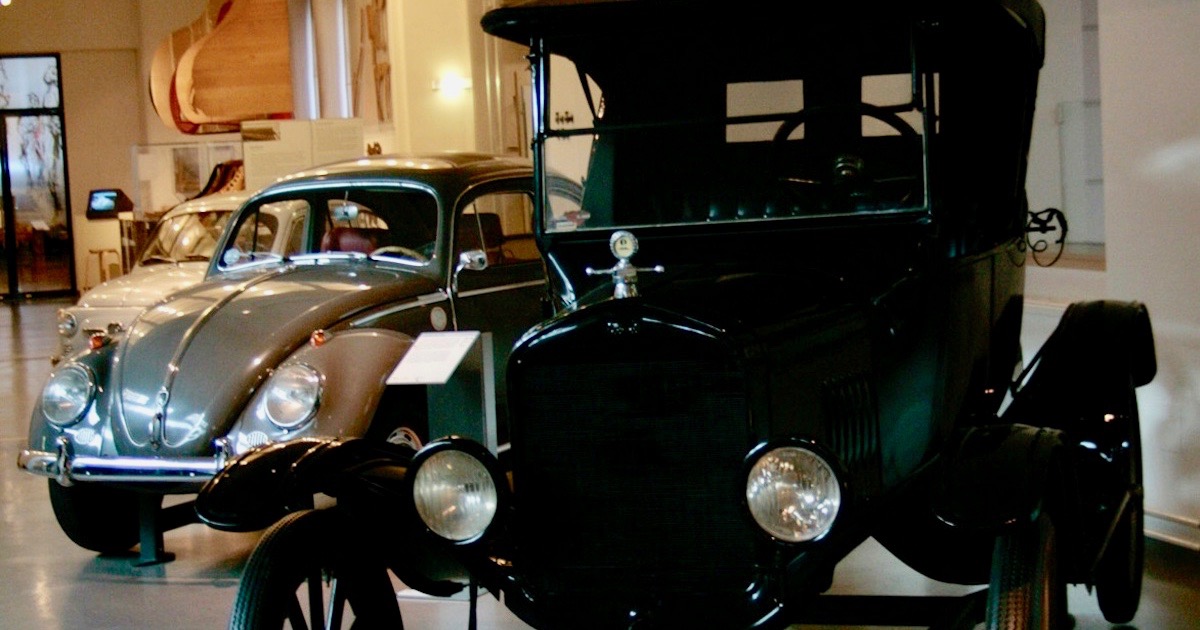 Evolution
Evolution
 Intelligent Design
Intelligent Design
I Believe in the Evolution of Life and the Evolution of Automobiles


When people ask me, “Do you believe in evolution?” instead of a misleading yes or no answer, I reply “I believe in the evolution of life, and the evolution of automobiles, but I don’t believe either could have happened without intelligent design.”
As I argue in my 2016 book Christianity for Doubters, which can now be downloaded in its entirety here, this is actually a very informative answer. We talk about the “evolution” of automobiles, yet we know there was design at every stage of this evolution. Humans didn’t create modern, self-driving cars first. The earliest automobiles were simple, and more complex cars gradually evolved over the years. Well, not “too” gradually: where major new features appeared, they appeared more or less suddenly. If you line up all the old models, you won’t find a very gradual transition between steam engines and internal combustion engines. Intermediate forms, with incipient internal combustion engines, would have had puzzling new but not yet useful features.
We see the same pattern in the evolution of software, as I highlighted in my 2000 Mathematical Intelligencer article, “A Mathematician’s View of Evolution.” The major advances made during the 40-year evolution of my partial differential equation solver PDE2D all appeared suddenly in new versions. (Please notice: I have a new book on PDE2D coming out this fall!) Any intermediate stages between my 2D solver and the first version which could solve 3D problems would have been full of new, but not yet working, features. And so they existed only in my mind, or on paper. If we look at the evolution of any type of human technology, we see this same “jerky” record, with steady advances but large gaps where major new features appear, and smaller gaps where less major new features appear. And if we think about what gradual transitions would have looked like, we can understand why they didn’t exist.
The evolution of life shows the same jerky progress seen in the evolution of human technologies. Harvard paleontologist George Gaylord Simpson (quoted in the MI article) writes:
It is a feature of the known fossil record that most taxa appear abruptly…. This phenomenon becomes more universal and more intense as the hierarchy of categories is ascended. Gaps among known species are sporadic and often small. Gaps among known orders, classes and phyla are systematic and almost always large. These peculiarities of the record pose one of the most important theoretical problems in the whole history of life: Is the sudden appearance of higher categories a phenomenon of evolution or of the record only, due to sampling bias and other inadequacies?
Notice also the 1982 Life Magazine article, referenced there, which actually uses the word “jerky” to describe the fossil record.
And again, if you think about what gradual transitions between major groups of animals would have looked like, you will understand why they don’t appear in the fossil record: they would have to have involved new but not yet useful features. University of California geologist Joseph LeConte acknowledged that in the fossil record, “species seem to come in suddenly” and that gradual transitions could not be explained by natural selection if they did exist: “An organ must be already useful before natural selection can take hold of it to improve on it,” he concedes. (Yet he concludes that evolution is “axiomatic.”)
If we try to draw an “evolutionary tree” mapping the evolution of automobiles, we can draw an approximate tree but we will find it hard to pin down some of the details. It will often be hard to decide which model is the “ancestor” of a given model, not only because of the occasional large jumps, but because technology is frequently borrowed from distant branches of the tree. Modern Ford cars evolved new GPS systems about the same time as Hondas, so did the new Fords evolve from the Hondas, or from previous Ford models?
Well, “convergence” — the independent evolution of similar new features in distant branches of the evolutionary tree — is also very common in biological evolution, and also confuses attempts to draw a reasonable tree for the evolution of life, as explained by Cornelius Hunter in “The Real Problem with Convergence.” The probability of similar designs arising independently through chance mutations is very small, but a designer could of course apply a similar design, such as a sonar guidance system, to distantly related species, such as bats and dolphins.
The similarities between the evolution of life and the evolution of human technologies are actually quite striking; you could even say there is some “market selection” involved in the evolution of technologies, though the variations are not random, they are designed. Yet for Darwin and other evolutionists, this is precisely the strongest argument against design. Why? Because even though evolution looks much like the way humans, the only other known intelligent beings in the universe, design things, this is clearly not the way God would have designed things (at least, not the way we would have done things if we were God). It is so obvious to them that God would not have done things this way that they prefer to attribute it all to a process that has never been observed to produce anything other than very minor adaptations, as reported in this 1980 New York Times article.
Well, why would God create like humans, through careful planning, testing and improvements? Even many theistic evolutionists feel it is insulting to God to give him credit for creating the way we humans do, and for creating species that didn’t survive, and for occasional suboptimal designs. Instead, they salvage God’s honor by giving him credit only for creating the fundamental particles and forces of physics, and claim that the four fundamental forces of physics alone must have then rearranged the fundamental particles of physics into computers and airplanes and Apple iPhones (more on this in Chapter 1 of Christianity for Doubters).
Why would God create like we do? Now we are getting into theology, of course, but the most obvious answer is: for the same reasons we do. If you don’t like that answer, I have an additional possible theological answer at the very end of Christianity for Doubters, but it may only seem reasonable to you if you read the entire book.
Photo: A Volkswagen Beetle compared with its evolutionary ancestor, a Ford Model T, by Manfred Werner – Tsui [GFDL or CC-BY-SA-3.0], from Wikimedia Commons.
